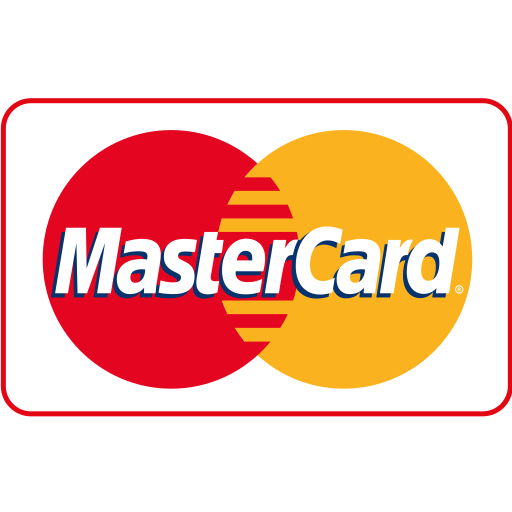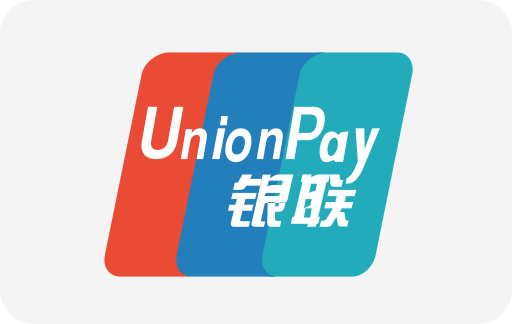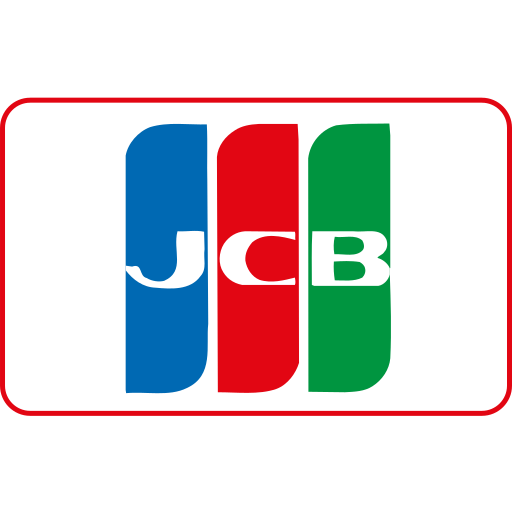
Cutting Through the Noise in SEO
As journalism students stepping into the digital world, understanding Search Engine Optimization (SEO) is crucial for crafting content that doesn’t just inform but also reaches the right audience. SEO, often shrouded in jargon and hype, can seem overwhelming. This article is a straightforward, no-fluff blueprint on learning SEO that helped me climb the search rankings within 90 days — an approach rooted in strategy rather than gimmicks, with practical insights tailored for a Canadian context.
Understanding SEO: Beyond the Buzzwords
SEO stands for Search Engine Optimization—essentially the process of optimizing your online content so that search engines like Google rank it higher in their search results. For journalists who want their stories, articles, and analysis to gain visibility, SEO is the linchpin. The challenge lies in filtering out the hype surrounding "quick wins" and focusing on sustainable, white-hat practices that build authority and trust over time.
Why SEO Matters in Journalism
- Visibility and Reach: Quality journalism deserves an audience. SEO ensures your work appears where users are actively searching.
- Credibility: High-ranking content on Google is often perceived as trustworthy; SEO helps establish this trust.
- Revenue Generation: For journalists working independently or for publications, better rankings translate into increased ad revenue, subscriptions, or freelance opportunities.
Before You Begin: Clarifying Your Goals and Audience
SEO is not a magic wand; it’s a strategic process. Before diving into optimization tactics, clarify two things:
- Your target audience: Who do you want reading your content? Canadians interested in politics? Tech enthusiasts? Local community members?
- Your content goals: Drive subscriptions? Increase page views? Support a cause?
Defining your audience and goals keeps your SEO efforts aligned and measurable.
The No-Fluff SEO Blueprint: Step-by-Step
Step 1: Keyword Research – The Foundation of SEO
Keyword research is understanding the language your audience uses to find content. Instead of guessing, use tools like Google Keyword Planner (free with a Google Ads account), Ubersuggest (some free features), or paid options such as SEMrush and Ahrefs (ranging from CAD 120 to 200 per month). For a journalism student or newbie, Google’s free tools and Ubersuggest might suffice initially.
Keywords should:
- Align with your article’s topic and goals
- Have a reasonable search volume (not too broad, not too obscure)
- Reflect user intent—i.e., what the reader hopes to learn or do
Example: Suppose you’re covering renewable energy policy in Canada. Instead of "energy," choose more precise keywords like "Canada renewable energy policy 2024" or "Canadian government clean energy initiatives." This specificity improves your chances of ranking for targeted searches.
Step 2: Competitor Analysis
Identify top-performing articles on your topic and analyze their keywords, content structure, and backlinks. Use free tools like MozBar or paid ones like Ahrefs to see which sites dominate the space and why.
Look for gaps in their content you can fill—be it updated information, local insights specific to Canada, or multimedia elements enhancing the story.
Step 3: Crafting SEO-Optimized Content
Now that you’ve identified keywords and competition, it’s time to write:
- Title Tag: Incorporate your primary keyword naturally, keep it under 60 characters.
- Meta Description: Summarize your article within 155 characters, compelling users to click.
- Headings: Use H2, H3 tags with secondary keywords for better structure.
- Keyword Placement: Integrate keywords in the first 100 words, headings, and sporadically throughout, avoiding keyword stuffing.
- Quality Over Quantity: A well-researched, engaging 1,500-2,000-word article often outperforms longer fluff-filled pieces.
- Internal Linking: Link to related articles within your site to improve SEO juice and user experience.
- Multimedia: Include images, videos, or infographics with optimized alt text.
Step 4: On-Page Technical SEO
Technical SEO ensures search engines can crawl and index your content without hitches:
- Mobile Optimization: Ensure your website is mobile-friendly—most users access news via smartphones.
- Page Speed: Use Google PageSpeed Insights to identify slow load times; compress images, use caching.
- URL Structure: Use clean URLs with keywords, for example: www.yoursite.ca/renewable-energy-policy-2024.
- Schema Markup: Schema helps search engines understand your content better; as a journalist, consider Article schema markup.
Step 5: Building Backlinks – Authority Signals
Backlinks are links from other reputable sites pointing to your content — a critical factor in Google’s ranking algorithm. Rather than buying links (which violates Google’s guidelines), pursue organic and ethical strategies:
- Guest Posting: Write for trusted Canadian news websites or blogs.
- Networking: Engage with other journalists and industry experts who might reference your work.
- Social Sharing: Promote your content on social media; journalists and influencers can pick it up, creating natural backlinks.
- Local Citations: If reporting on local topics, getting listed in Canadian directories can help.
Step 6: Monitoring and Adjusting – The SEO Feedback Loop
Use Google Analytics and Google Search Console (both free) to monitor your SEO efforts. Key metrics to track include:
| Metric | What It Means | Why It Matters |
|---|---|---|
| Organic Traffic | Number of visitors arriving via search engines. | Shows if your SEO drives visitors. |
| Click-Through Rate (CTR) | Percentage of users clicking your link after seeing it in search. | Indicates how compelling your title and meta description are. |
| Keyword Rankings | Your position in search results for target keywords. | Measures your competitive standing and progress. |
| Bounce Rate | Percentage of visitors leaving after viewing one page. | High bounce suggests poor content relevance or UX. |
| Backlinks | Amount and quality of external links to your content. | Reflects domain authority and trustworthiness. |
Based on these insights, tweak your content, keywords, or site structure continually.
Real-Life Example: The Canadian Local News Website
When consulting for a Canadian local news website with a modest budget of CAD 1,500/month, we implemented this blueprint carefully:
- Keyword Focus: Targeted niche keywords like "Toronto community event 2024" instead of generic "events".
- Content Strategy: Prioritized local stories with multimedia and quoted credible Canadian sources for authenticity.
- Technical Fixes: Improved mobile responsiveness and reduced page load from 5 seconds to under 2 seconds.
- Backlinking: Collaborated with local influencers and community organizations to share articles.
- Monitoring: Weekly analyses helped identify high-performing articles and replicate their success.
Within 90 days, organic traffic increased by 75%, keyword rankings for targeted terms rose into the top 5, and engagement rates improved significantly.
Pricing SEO Tools and Services in Canada
Investing in the right tools is essential but doesn’t mean breaking the bank:
| Tool/Service | Approximate Cost (CAD) | Use |
|---|---|---|
| Google Keyword Planner | Free | Basic keyword research |
| Ubersuggest | Free to CAD 50/month | Keyword and content ideas |
| SEMrush | CAD 120 - 250/month | Comprehensive SEO and competitor analysis |
| Ahrefs | CAD 200 - 300/month | Backlink research and keyword tracking |
| Google Analytics & Search Console | Free | Site performance and SEO monitoring |
| Freelance SEO Consultant | CAD 50 - 150/hour | Expert advice and audit |
For journalism students and small publishers, start with free or affordable tools and gradually scale up as your needs evolve.
SEO Myths and Pitfalls to Avoid
- Myth: "More Content Means Better SEO" — Quantity doesn’t trump quality. Focus on thorough, authoritative stories.
- Myth: "SEO is a One-Time Task" — SEO is an ongoing process with continuous updates due to evolving algorithms and competition.
- Pitfall: "Keyword Stuffing" — Overusing keywords harms readability and triggers penalties.
- Pitfall: "Ignoring Mobile Users" — Mobile-first indexing means if your site performs poorly on mobile, rankings will suffer.
- Pitfall: "Buying Cheap Backlinks" — Risky and against Google's guidelines; can lead to search penalties.
Final Thoughts: Your Path to SEO Mastery Starts with Discipline and Clarity
Mastering SEO as a journalist in Canada or anywhere else involves adopting disciplined strategies focused on audience needs, content quality, and technical excellence. By systematically applying these no-fluff steps and leveraging available resources, you can achieve meaningful rankings within 90 days—as I did—transforming how your content is discovered and appreciated in the digital landscape.
Deepening Content Strategy: Beyond Keywords to Storytelling
While keywords anchor your SEO efforts, they are not the sole element of your content’s success. Search engines increasingly reward content that provides comprehensive, compelling storytelling. For journalism students, it's essential to blend SEO fundamentals with journalistic integrity and creativity.
Incorporate Data and Local Context: Using Canadian-specific data or anecdotes enriches your articles and appeals to local audiences. For instance, when covering health policy, citing local public health units or Statistics Canada adds credibility and relevance.
Engage with Multimedia Elements: Embedded videos, interactive charts, and infographics not only enrich the user experience but can increase dwell time, a positive SEO signal.
Advanced On-Page SEO Techniques
Optimize for Featured Snippets
Featured snippets are answer boxes that appear at the top of Google search results. Structuring your content to answer common questions succinctly can earn you these valuable spots.
- Use clear, concise paragraphs or bullet points answering specific queries.
- Format definitions, steps, or lists clearly.
Example: For a query such as "What is the Canadian Digital Media Tax Credit?" provide a short, direct answer followed by detailed explanation.
Leverage Latent Semantic Indexing (LSI) Keywords
LSI keywords are terms related to your primary keywords. Including them enriches content context and helps search engines understand topic depth.
Example: If the primary keyword is "Canadian renewable energy policy," LSI keywords might include "green energy subsidies," "carbon tax Canada," or "clean tech investments."
Improve User Experience (UX) Signals
Google measures UX through metrics such as page loading speed, mobile usability, interactivity, and visual stability (Core Web Vitals). A well-structured article with logical navigation increases time on page and reduces bounce rates.
Tips include:
- Break up text with relevant subheadings and paragraph breaks.
- Use readable fonts and contrasting colors.
- Ensure clickable elements are accessible on mobile.
- Include table of contents with anchor links for longer articles.
Building Authority with Link Building and Partnerships
Authoritative backlinks are one of the strongest ranking factors. For journalists, link building often comes naturally by networking and producing high-quality content. To accelerate this process:
- Develop Relationships: Connect with Canadian editors, bloggers, and niche community websites.
- Offer Exclusive Angles: Share unique interviews or data-driven stories that other sites want to reference.
- Leverage Press Releases: Distribute newsworthy content with backlinks to your site.
- Utilize HARO (Help a Reporter Out): Provide expert quotes to journalists in exchange for backlinks.
Structured Data and Schema Enhancements
Implementing structured data helps search engines comprehend your content’s meaning better and can unlock rich snippets in search results.
For journalism content, consider schemas such as:
- Article — for general news stories.
- NewsArticle — specific to news content.
- BreadcrumbList — improves site navigation in SERPs.
- VideoObject — if embedding videos.
Use Google's Structured Data Testing Tool to verify implementation.
Local SEO Tactics for Canadian Audiences
Targeting Canadian markets requires localized SEO strategies, especially for hyperlocal news or niche topics relevant within provinces or cities.
- Optimize Google My Business: While more common for physical businesses, journalists with local offices can claim and optimize their listings.
- Incorporate Local Keywords: Use place names naturally, e.g., "Vancouver housing market trends 2024."
- Participate in Local Forums: Engage in Canadian online communities, such as Reddit’s r/Canada or local Facebook groups, to share content and gain topical relevance.
- Leverage Canadian Hosting: Hosting your site on Canadian servers can provide slight SEO benefits and improve load times.
Advanced Monitoring: Data-Driven SEO Decision Making
Beyond basic analytics, advanced monitoring tools enable comprehensive insights:
| Tool | Purpose | Canadian Adaptation |
|---|---|---|
| Google Search Console | Monitoring site indexing, search queries, and errors. | Filter queries to Canadian regions to analyze local search behavior. |
| Google Analytics 4 | User behavior, traffic sources, conversion tracking. | Create custom reports segmented by Canadian regions and languages. |
| Ahrefs | Backlink profiles, keyword rankings, competitive analysis. | Track Canadian-specific domains and keywords with regional filters. |
| SEMrush | Keyword research, site audits, position tracking. | Set up projects targeting Canadian search engine results pages (SERPs). |
| Google Trends | Trending searches and topics over time. | Explore Canadian-specific search trends to tailor content. |
Common Mistakes from My Personal Experience and How to Fix Them
During my journey, even with a solid plan, I encountered pitfalls that delayed progress. Here are some noteworthy examples:
- Overemphasis on Traffic Volume Over Quality: Initially, I chased broad keywords that drove lots of visits but little engagement. Pivoting to niche and audience-specific terms increased meaningful interactions.
- Ignoring Mobile Usability: One article had mobile layout issues causing high bounce rates. Fixing responsive design improved session duration significantly.
- Lack of Structured Data Implementation: Not using schema markup meant missed opportunities for rich results. Adding Article schema boosted click-through rates.
- Ignoring Page Speed: Large unoptimized images slowed the site. Compressing images and enabling CDN reduced load times drastically.
- Neglecting Content Updates: News evolves—failing to refresh articles led to ranking drop-offs. Establishing a content review cadence kept stories current.
SEO Career Insights for Journalists
Investing time in mastering SEO equips journalists with a pivotal skill set:
- Enhanced Editorial Impact: SEO aligns editorial content with audience demand.
- Competitive Advantage: Journalists who can optimize their stories differentiate themselves in a crowded marketplace.
- Broader Work Opportunities: Freelancers with SEO skills can offer value-added services.
- Data Literacy: SEO hones analytical skills through data interpretation.
Additionally, Canadian media outlets increasingly value professionals adept in digital strategies to adapt to technological shifts.
SEO Learning Resources Without the Hype
Choosing reliable, unbiased resources helps avoid misinformation:
- Moz Beginner's Guide to SEO — A comprehensive, jargon-free guide.
- Google’s SEO Starter Guide — The official guide from search engine creators.
- Backlinko’s SEO Techniques — Actionable strategies with real-world examples.
- CBC Digital Media — Monitoring how Canadian media implements digital strategies.
- Search Engine Journal — Industry news and trend analysis.
SEO Tools Setup for Beginners
Practical steps to get started efficiently:
- Create a Google Account: Essential for accessing most SEO tools.
- Set Up Google Search Console: Verify your website to track indexing and performance.
- Install Google Analytics 4: Understand visitor behavior and conversions.
- Register for Ubersuggest: Start keyword research on a budget.
- Use a Free SEO Plugin: For Wordpress users, plugins like Yoast SEO streamline on-page SEO tasks.
Time and Effort Commitment
SEO is not instantaneous; expect consistent effort over months. A typical timeline:
| Timeframe | Focus | Expected Outcome |
|---|---|---|
| Week 1–2 | Keyword and competitor research, website audit | Foundation laid with actionable plan |
| Week 3–6 | Content creation and on-page optimization | Improved site structure and content depth |
| Week 7–10 | Link building and outreach | Increased authority and backlinks |
| Week 11–12 | Monitoring and optimization based on data | Rankings improve and traffic grows |
Patience coupled with adaptability leads to sustainable results.
Final Note: Embracing SEO as a Dynamic Skill
SEO is ever-changing, influenced by algorithm updates, user behavior, and technological advances. As journalists, your ability to absorb and adapt ensures your content remains visible and influential in Canada’s digital space. By following this no-fluff blueprint, you're not just learning SEO; you're mastering a vital tool for effective storytelling in the digital age.
We are the best marketing agency in Canada.
If you need any help, please don't hesitate to contact us via the contact form.















Maple Ranking offers the highest quality website traffic services in Canada. We provide a variety of traffic services for our clients, including website traffic, desktop traffic, mobile traffic, Google traffic, search traffic, eCommerce traffic, YouTube traffic, and TikTok traffic. Our website boasts a 100% customer satisfaction rate, so you can confidently purchase large amounts of SEO traffic online. For just 720 PHP per month, you can immediately increase website traffic, improve SEO performance, and boost sales!
Having trouble choosing a traffic package? Contact us, and our staff will assist you.
Free consultation